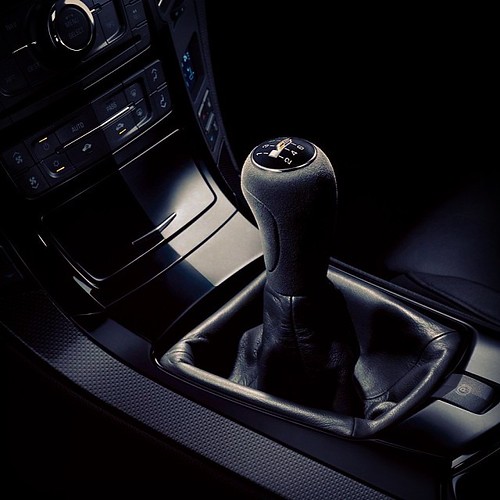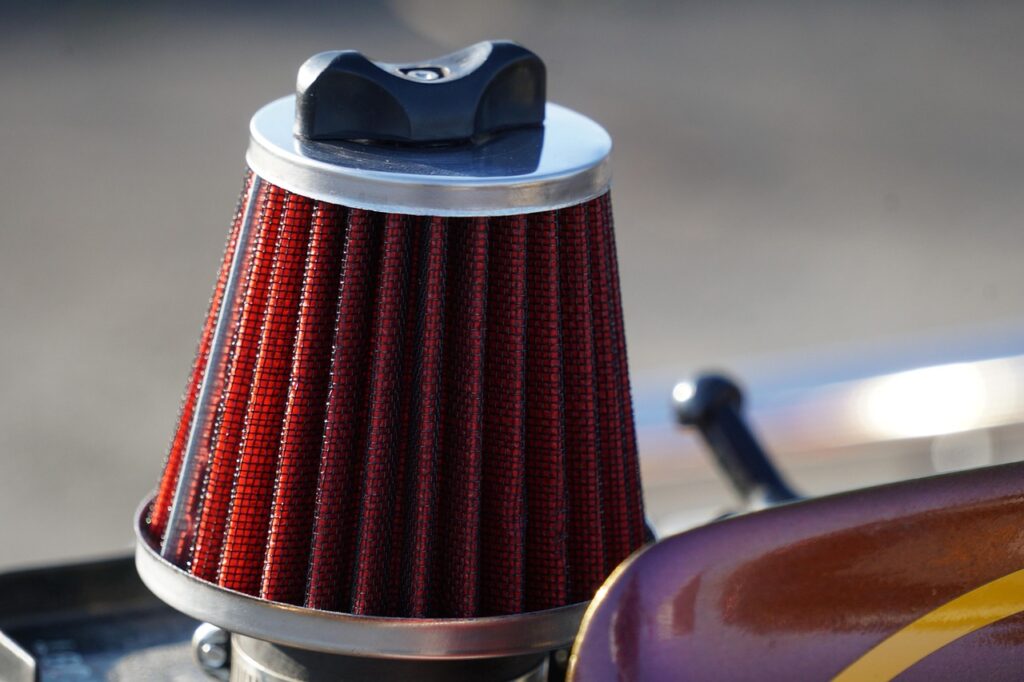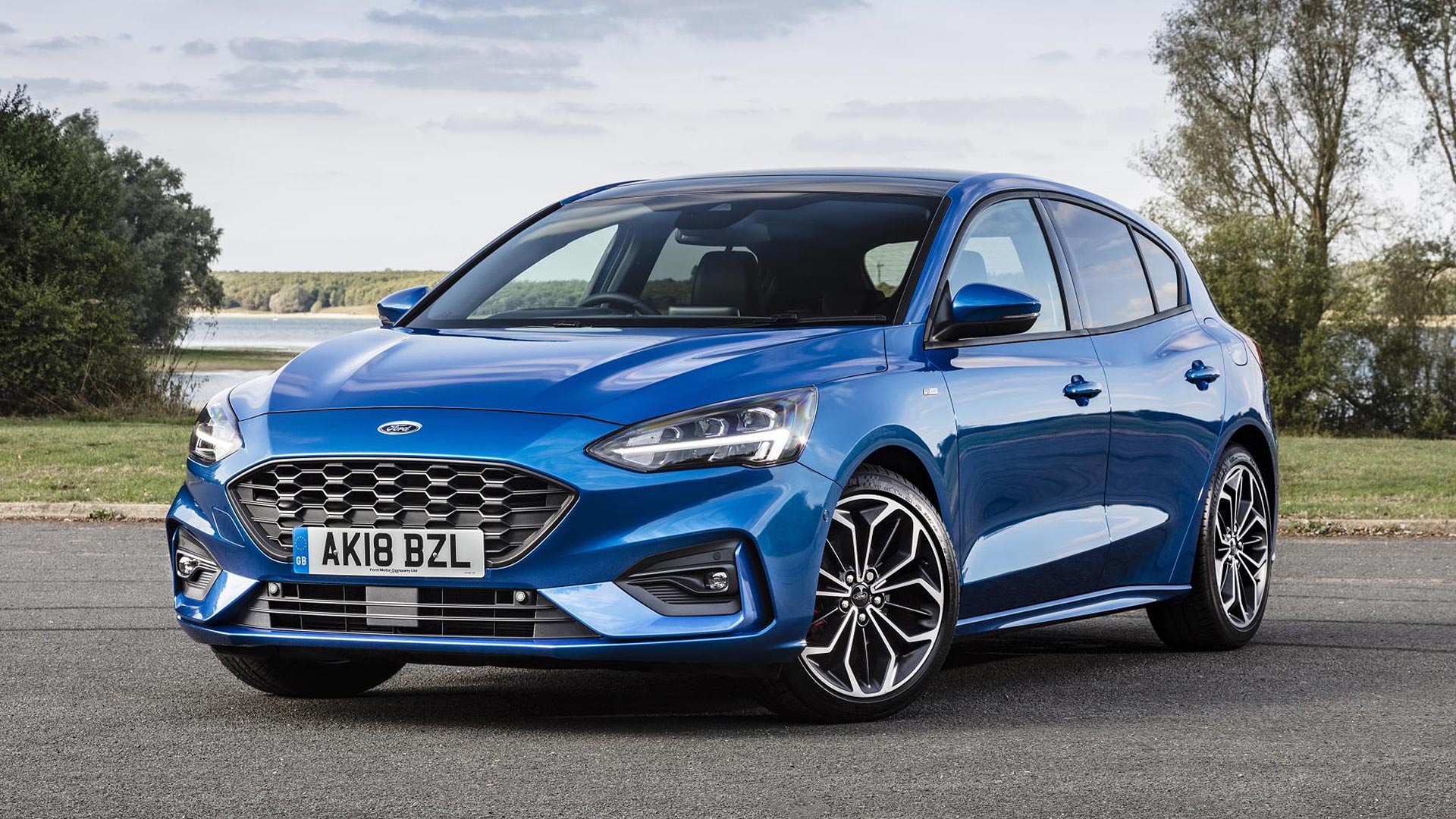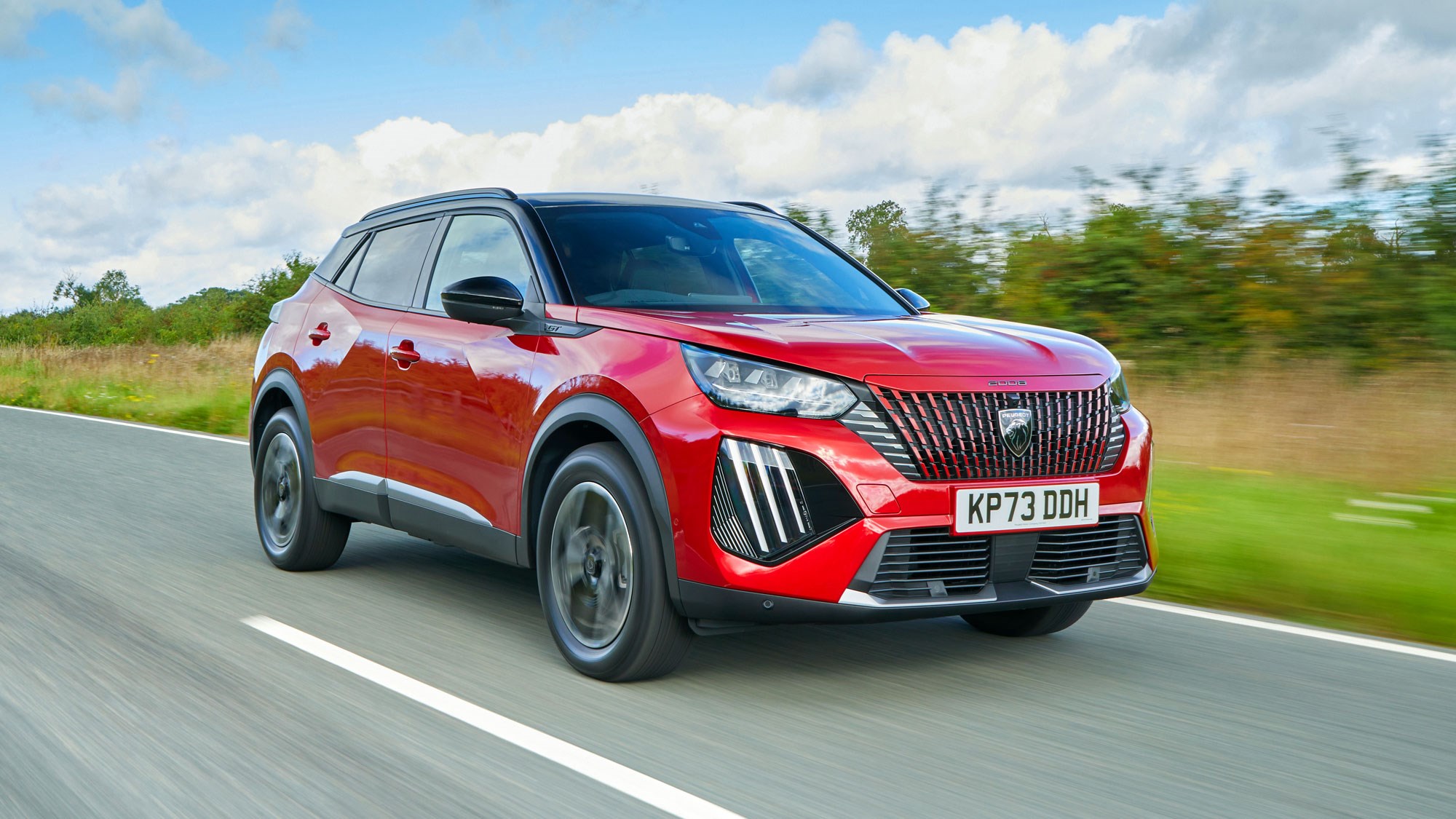
In an era where every cent counts and environmental consciousness is growing, understanding your car’s fuel economy is more critical than ever. Drivers are constantly seeking ways to maximize efficiency, reduce costs at the pump, and minimize their environmental footprint. Yet, this vital topic is often clouded by a mix of outdated information, popular misconceptions, and significant regulatory shifts that can profoundly impact both our personal finances and the planet.
Recent developments in federal policy have brought the complexities of fuel economy into even sharper focus. Changes affecting the automotive industry, particularly the elimination of penalties for carmakers not meeting fuel efficiency requirements, signal a potential shift in the landscape of vehicle design and consumer savings. These policy decisions, alongside enduring myths about how cars consume fuel, create a challenging environment for drivers seeking clarity.
As your trusted source for objective, data-driven insights, we’ve delved deep into these critical issues. Our goal is to cut through the noise, debunk common falsehoods, and equip you with the accurate, practical knowledge needed to make informed decisions about your vehicle. Let’s uncover the shocking truths about your car’s fuel economy and empower you to drive smarter, save more, and contribute to a healthier environment.
1. **The Impact of Eliminated Penalties on Carmakers and Innovation**
In a significant move that reverberated through the automotive industry, President Donald Trump’s signature bill eliminated the penalties carmakers would have had to pay for not meeting fuel economy requirements. This decision was met with applause from the car industry, which, according to federal data, had incurred over $1 billion in fines over the past decade due to these regulations. The immediate relief for manufacturers is clear, but the long-term implications for consumers and vehicle design are now a pressing concern.
Experts like Dan Becker, director of the Safe Climate Transport Campaign at The Center for Biological Diversity, voiced strong concerns, stating, “If there’s no penalty, the auto companies can cheat at will.” He characterized the move as a “Get Out of Jail Free” card for manufacturers, suggesting a significant reduction in the incentive to engineer more fuel-efficient vehicles. This rollback could ultimately mean that carmakers might not feel the same pressure to innovate or enhance their cars’ fuel efficiency, potentially stagnating advancements that directly benefit drivers.
However, not all experts agree on the extent of this impact. K. Venkatesh Prasad, senior vice president of research and chief innovation officer at the Center for Automotive Research, suggested there might be a slowdown in mileage improvements without regulatory demand. Yet, he emphasized that the industry often operates on a global scale. Prasad noted, “Avoiding local (say, U.S.) cost given relaxed local regulations would hurt global sales or add new cost to sales of the US-designed products in other markets (China and Europe) so car makers and equally importantly the major suppliers would all invest to be ready for all major markets.” This perspective offers a glimmer of hope that global market pressures could still drive innovation, even with relaxed domestic regulations.

2. **Your Wallet: The Real Cost of Relaxed Fuel Standards**
Beyond the boardrooms of automotive giants, these policy changes have tangible implications for every driver’s pocketbook. The connection between fuel economy rules and the price you pay at the gas station is direct and substantial. To quantify this, USA TODAY undertook an extensive analysis, compiling data for nearly 100 of the most popular cars sold across the country, vividly illustrating the potential financial impact on consumers.
Consider the example of the most efficient 2025 Ford F-150. Driving this truck for 15,000 miles currently costs approximately $2,000. However, if Ford were to retrofit the truck to meet the federal efficiency standards it was required to follow by 2031, that cost would be cut nearly in half. This significant saving highlights how much more efficient vehicles could be if manufacturers adhered to stringent future requirements, translating directly into lower operating costs for owners.
Extending this methodology across a wide range of popular car models, USA TODAY’s analysis revealed potential savings for drivers ranging from $53 to a substantial $1,432. The majority of cars included in the analysis showed potential savings between $900 and $1,200 annually if these efficiency requirements were met. This data encompassed various vehicle types, including passenger cars, SUVs, minivans, and pickups, underscoring the broad financial benefit to the average American driver.
In fact, the Biden administration had previously projected that its fuel efficiency standards for model years 2027 through 2031 would save Americans more than $23 billion in fuel costs. While these regulatory costs were estimated to add a few hundred dollars to new car prices, the agency’s analysis last year showed that this initial increase would eventually be offset and surpassed by significant fuel savings over the vehicle’s lifetime, demonstrating a net positive financial outcome for consumers.
3. **Environmental Fallout: Climate Change and Emissions Standards**
While the financial impact on drivers is undeniable, the broader implications of fuel efficiency requirements extend powerfully to the environment. Experts widely agree that these standards are beneficial not only for consumers but also for the health of our planet. The near-doubling of fuel economy from 1975 to 2018, as estimated by a study co-written by research professor David Greene, resulted in monumental savings: 2 trillion gallons of gasoline and a reduction of 17 billion metric tons of carbon dioxide emissions.
This crucial link between fuel consumption and environmental health is further underscored by the fact that the less fuel a car needs, the lower its emissions. Recognizing this synergy, the Environmental Protection Agency (EPA) previously proposed greenhouse gas emissions standards for cars that worked in tandem with fuel efficiency requirements. However, recent proposals to roll back these emissions standards, alongside the removal of fuel economy penalties, are a cause for significant environmental concern.
David Greene, a former adviser for the National Highway Transportation Safety Administration, acknowledged the ambition of the original emissions standards. Yet, he warned that removing them could severely hamper efforts to combat climate change. Greene unequivocally stated, “That’s a huge blow to the U.S. efforts to reduce greenhouse gas emissions and to mitigate the damaging effects of climate change, which we see just about every day now.” His words highlight the urgency and the potential consequences of such policy reversals.
Transportation, encompassing cars, ships, trains, and planes, currently stands as the largest sector emitting climate-warming gases, according to the EPA. Despite claims of more affordable prices and regulatory relief touted by EPA administrator Lee Zeldin when announcing the car greenhouse gas emissions repeal, the agency’s own draft assessment painted a starkly different picture. USA TODAY reported that this move could cost the economy hundreds of billions of dollars, a figure that dwarfs any purported short-term savings.
Furthermore, incentives designed to accelerate the transition to electric cars, which promised additional savings and environmental benefits, are also diminishing. For instance, federal tax credits of $7,500 for people who buy new electric cars are no longer available. The previous administration also halted a Biden administration initiative aimed at expanding the national network of electric vehicle chargers. These actions cumulatively undermine efforts to foster a cleaner, more fuel-efficient future for personal transportation.
4. **Myth: Premium Gas Equals Better Fuel Economy**
Perhaps one of the most enduring and costly misconceptions among drivers is the belief that premium gasoline, with its higher octane rating, somehow translates directly into better fuel economy or improved engine performance. This widespread idea often leads consumers to spend extra money at the pump, assuming they are giving their vehicle a superior fuel that will yield noticeable benefits.
The truth, however, is far more nuanced. Octane ratings in gasoline primarily denote the fuel’s resistance to pre-ignition, also known as engine knocking or pinging, rather than its energy content or overall quality. For the vast majority of vehicles on the road today, regular unleaded gasoline is perfectly sufficient and provides all the necessary performance and protection. Unless your vehicle is specifically designed to run on premium fuel, using it will not provide any significant improvement in either performance or fuel economy.
To avoid wasting money, the most reliable guide for your vehicle’s fuel needs is its owner’s manual. This essential document specifies the recommended octane level for optimal operation. If your car does not require premium gasoline, you are simply paying a higher price without gaining any fuel efficiency or engine health benefit. Modern engines, especially those designed for regular fuel, are precisely tuned to maximize efficiency with the specified octane, and higher octane levels do not enhance combustion efficiency or power beyond that.
There are, admittedly, specific situations where higher octane fuel might offer a marginal advantage. Under severe duty operation, such as towing heavy loads or driving in extremely hot weather, a few vehicles might experience a slight improvement in performance and gas mileage, and a modest reduction in carbon dioxide emissions. However, these are exceptions, and for everyday driving under normal conditions, the benefits of premium fuel for an engine designed for regular are negligible.

5. **Myth: Bigger Cars Always Use More Fuel**
For decades, the conventional wisdom held that larger vehicles inherently consumed more fuel than their smaller counterparts. This belief often steered consumers towards compact cars, even if a larger vehicle better suited their lifestyle or family needs. However, significant advancements in automotive engineering have rendered this generalization largely outdated, challenging a long-standing perception in the minds of many drivers.
Today, it is simply no longer true to assume that bigger automobiles are by nature fuel guzzlers. Modern technical innovations have dramatically improved the fuel economy of larger vehicles like trucks and SUVs. These advancements include sophisticated transmission systems with more gears, the widespread adoption of turbocharging for increased power and efficiency, and the integration of hybrid technology, which is now successfully applied to large cars, substantially reducing their gasoline requirements.
Beyond engine and transmission innovations, manufacturers are also focusing on vehicle weight and aerodynamics. The emphasis is now on the weight load rather than just the overall size or engine capacity. Newer materials and design principles are enabling the production of lighter cars without compromising dimensions or safety. Manufacturers are increasingly utilizing lightweight materials such as aluminum and carbon fiber, which reduces the energy needed to propel the vehicle, thereby lowering fuel consumption significantly.
Furthermore, larger vehicles now incorporate smoother panel designs and advanced aerodynamic profiles. These features reduce wind resistance, which is a major factor in fuel consumption, particularly at higher speeds. Consequently, today’s larger vehicles can achieve fuel economy ratings that are as good as, or even superior to, many smaller cars, demonstrating that selecting a vehicle based solely on size for fuel efficiency is an outdated approach. Consumers should instead prioritize specific fuel economy ratings for their desired vehicle class.
Read more about: The Mythbusters of the Road: 8 Car Reliability & Repair Myths That Could Be Draining Your Wallet

6. **Myth: Engine Idling Saves More Fuel Than Restarting**
It’s a common scenario: you pull up to a curb, wait for a friend, or pause briefly in a drive-thru line, and your engine stays running. Many drivers operate under the assumption that turning their engine off and then restarting it consumes more fuel and causes more wear than simply letting it idle. This deeply ingrained habit, however, is a pervasive myth that can cost you both money and contribute to unnecessary emissions.
Modern fuel-injected engines are designed to start very efficiently, particularly once they are warmed up. The amount of fuel used to start an engine is significantly less than the fuel consumed during idling for extended periods. Experts state that idling can burn between a quarter to a half gallon of fuel per hour, depending on the vehicle’s engine size. This translates to an approximate cost of 1 to 2 cents per minute. Therefore, turning off your engine if you anticipate being stationary for more than about 10 seconds can lead to tangible fuel savings in the long run.
Beyond the financial savings, reducing engine idling offers substantial environmental benefits. Idle vehicles are continuous emitters of pollutants, contributing to poor air quality and increasing greenhouse gas emissions. By choosing to turn off your engine instead of idling, drivers can actively contribute to mitigating these harmful emissions, fostering cleaner, healthier air in local communities and helping to combat climate change, aligning personal habits with broader environmental goals.
In fact, many contemporary vehicles are equipped with sophisticated start-stop systems as a standard feature. These systems automatically shut off the engine when the vehicle comes to a complete stop and seamlessly restart it when the driver presses the accelerator pedal. This innovative technology removes the decision-making from the driver, ensuring optimal fuel economy and reduced environmental pollution without any manual intervention, highlighting how modern engineering supports more sustainable driving practices.
Read more about: Stop Falling for These 19 Car Myths: Essential Facts for Drivers

7. **Myth: Manual Transmissions Always Provide Better Fuel Economy**
For many years, the automotive landscape was clear: if you wanted the best fuel economy, a manual transmission was the way to go. This belief was rooted in a time when automatic transmissions were less sophisticated, often featuring fewer gears and less precise control over engine RPMs. Drivers seeking to squeeze every last mile out of a gallon would invariably opt for a stick shift, under the impression that it offered superior control and, by extension, better efficiency.
However, the rapid advancements in automatic transmission technology have fundamentally altered this paradigm. Today’s automatic transmissions are far more advanced, commonly featuring six, eight, or even more gears. These modern systems, along with the widespread adoption of Continuously Variable Transmissions (CVTs), can often achieve fuel economy ratings that match or even surpass those of their manual counterparts. The sophisticated engineering behind these automatics allows for precise gear selection or continuous adjustment, optimizing engine performance for efficiency in ways that traditional manuals sometimes struggle to replicate.
Specifically, Continuously Variable Transmissions represent a significant leap forward. Unlike traditional automatics that shift between a set number of gear ratios, CVTs continuously adjust, allowing the engine to operate at its most efficient RPM for any given driving condition. This capability means the engine runs only at the required power, thereby reducing fuel consumption and contributing to lower carbon dioxide emissions, particularly in stop-and-go city driving. Furthermore, hybrid and electric vehicles are increasingly leveraging CVTs to enhance both fuel efficiency and battery range, showcasing their effectiveness.
The takeaway for today’s driver is that the choice between a manual and an automatic transmission should no longer be solely dictated by fuel economy expectations. While personal preference for driving engagement certainly plays a role, advances in automatic technology have effectively bridged and often reversed the efficiency gap. Consumers should instead compare specific fuel economy ratings for different transmission options within a particular vehicle model, making a decision based on their individual needs and driving styles rather than outdated assumptions.
Read more about: Stop Falling for These 19 Car Myths: Essential Facts for Drivers
8. **Myth: Air Conditioning Drains More Fuel Than Open Windows**
The debate between using air conditioning and opening windows to save fuel is a classic one, with drivers often feeling torn between comfort and economy. Many motorists believe that running the air conditioning system places a significant load on the engine, thereby consuming substantially more fuel than simply opening the windows to allow natural airflow. While both options indeed affect your vehicle’s fuel economy, the true impact is far more nuanced and depends heavily on your driving speed.
At lower speeds, such as cruising through city streets or in heavy traffic, opening the windows can indeed be a more fuel-efficient choice. In these scenarios, the aerodynamic drag created by open windows is minimal, and the engine typically expends more energy to power the air conditioning compressor than it would to overcome the slight increase in drag. However, the tables turn dramatically as speeds increase. At highway speeds, the aerodynamic resistance caused by open windows becomes significant. This drag forces the engine to work harder to maintain speed, often consuming more fuel than the air conditioning system would.
Beyond speed, the efficiency of your vehicle’s air conditioning system itself, and its proper maintenance, play crucial roles. Newer vehicles are generally equipped with more fuel-efficient A/C systems that have a lesser impact on fuel usage compared to older models. More importantly, ensuring your vehicle’s air conditioning system is properly maintained can help minimize its effect on fuel economy. This involves routine checks of refrigerant levels, topping up when necessary, and confirming that the compressor and other components are operating optimally.
Therefore, the optimal approach often involves a strategic balance. Utilizing natural air circulation by opening windows at lower speeds is sensible. At higher speeds, however, it can be more efficient to keep the windows closed and use the air conditioning sparingly, perhaps at a higher temperature setting to reduce the compressor’s workload. Drivers can enjoy a comfortable cabin environment without drastically compromising fuel efficiency, especially during warmer months when cool air is most desired, by understanding these dynamics.
9. **Myth: Fuel Additives Boost Economy**
The automotive aftermarket is awash with a myriad of fuel additives, all promising a dramatic boost in fuel economy, enhanced engine performance, or extended engine life. These products often come with enticing claims of scientific breakthroughs and secret formulations, leading many drivers to believe that a simple pour-in solution can unlock significant savings at the pump and improve their vehicle’s overall health. This belief, however, warrants a critical look, as the reality is often far less revolutionary.
While certain additives can be beneficial in specific, limited scenarios, there is no universal additive that substantially improves fuel economy across all types of cars, especially modern ones. The vast majority of contemporary gasoline blends already incorporate a sophisticated package of detergents and friction modifiers, which are essential for maintaining engine cleanliness, preventing deposits, and ensuring optimal performance. These additives are carefully formulated by fuel manufacturers to meet specific industry standards and keep your engine running smoothly and efficiently.
Moreover, both the Federal Trade Commission (FTC) and various automotive professionals have conducted extensive research and testing on the efficacy of aftermarket fuel additives. Consistently, these studies have indicated that the benefits of such products are often negligible at best, and in many cases, entirely non-existent for new automobiles that are already precisely tuned for peak performance and efficiency. The FTC specifically cautions consumers to be wary of any fuel additive that promises drastic increases in fuel efficiency or significant improvements in a car’s performance, as these claims are rarely substantiated by independent, scientific evidence.
For vehicle owners truly aiming to maximize fuel economy and ensure engine longevity, a reliance on unproven additives is a costly distraction. The most reliable and cost-effective strategies involve adherence to a schedule of routine maintenance and the adoption of good driving behaviors. This includes regular oil changes, tire pressure checks, and air filter replacements, combined with smooth acceleration, gentle braking, and observing speed limits. Always consult your vehicle’s owner’s manual for recommended fuel grades and maintenance schedules; these provide the most authoritative guidance for optimal engine health and efficiency.

10. **Myth: Vehicles Need to Warm Up Before Driving**
It’s a familiar morning ritual for many drivers, especially in colder climates: starting the car and letting it idle for several minutes to “warm up” the engine before setting off. This ingrained habit stems from a long-standing belief that modern vehicles, much like their carbureted predecessors, require a period of stationary operation to reach optimal temperature, lubricate internal components, and thus operate more efficiently and without undue wear. This deeply entrenched notion, however, is a pervasive myth that can lead to unnecessary fuel consumption and increased emissions.
The truth is that modern fuel-injected engines are engineered to be ready for operation almost immediately after starting. Unlike older carbureted engines that needed time to properly mix fuel and air, today’s sophisticated engine management systems, equipped with advanced sensors and electronic controls, precisely adjust the fuel-air ratio from the moment the engine turns over. This allows for efficient combustion and lubrication within seconds of ignition, even in cold conditions.
Experts consistently confirm that the quickest and most efficient way to warm up a vehicle’s engine is to drive it gently. While it’s advisable to avoid subjecting the engine to extreme loads or high RPMs until it has reached its normal operating temperature, a light and steady drive is far more effective at bringing all engine components, including the transmission and tires, up to their optimal operating temperatures than prolonged idling. Idling simply burns fuel without moving the vehicle, consuming between a quarter to a half gallon of fuel per hour, depending on the engine size, and contributing to unnecessary emissions.
Therefore, the practice of extended idling to warm up a car is not only wasteful but also counterproductive for fuel economy and environmental responsibility. Drivers should aim to start their vehicle, allow a few seconds for oil pressure to build, and then proceed with a gentle drive. This approach not only conserves fuel but also helps the catalytic converter reach its operating temperature faster, reducing harmful tailpipe emissions more quickly. By breaking this outdated habit, drivers can contribute to both their wallet and cleaner air.
Read more about: CR7’s Roaring Empire: A Jalopnik Deep Dive into Cristiano Ronaldo’s $25 Million Supercar Collection That Redefines Automotive Opulence

11. **Myth: A Vehicle’s Fuel Economy Significantly Decreases with Age**
Many car owners hold the understandable concern that as their vehicle accumulates miles and years, its fuel economy will inevitably plummet, turning it into a “gas guzzler” even if it was once efficient. This belief can lead drivers to consider replacing older, otherwise reliable vehicles prematurely, assuming that newer models will always offer superior fuel efficiency simply by virtue of their age. While some components do experience wear over time, the notion of a significant, inevitable decline in fuel economy with age is largely a myth for well-maintained vehicles.
In reality, a vehicle that receives proper, consistent maintenance can maintain its efficiency for many years, often well into its second decade of service. The Environmental Protection Agency (EPA) even conducts its vehicle fuel economy tests with vehicles having an equivalent of 5,000 miles on the odometer, recognizing that a vehicle’s fuel economy typically improves through its break-in period. If a car is routinely serviced according to the manufacturer’s recommendations—including regular oil changes, tire rotations, and system checks—it can continue to deliver near-original fuel economy ratings even at 10 or 15 years old.
The key differentiator here is maintenance. It’s not age itself that causes a drop in fuel economy, but rather neglected maintenance. Components like spark plugs, oxygen sensors, and fuel filters, if left untended, can degrade engine performance and, consequently, fuel efficiency. For example, a vehicle that is drastically out of tune can see its fuel economy improve by as much as 4% simply by receiving a proper tune-up. This illustrates that proactive care, rather than the passage of time, is the primary determinant of sustained efficiency.
Therefore, rather than assuming an older car is inherently inefficient, drivers should focus on diligent maintenance. Investing in regular servicing, addressing warning lights promptly, and replacing worn components as needed are far more effective strategies for preserving fuel economy than prematurely upgrading to a new vehicle. A well-cared-for older car can be a remarkably cost-effective and fuel-efficient mode of transportation, challenging the pervasive myth that age automatically equates to diminished performance at the pump.

12. **Myth: Replacing Your Air Filter Will Help Your Car Run More Efficiently**
The idea that a clean air filter is crucial for optimal engine performance and fuel economy is a deeply ingrained piece of automotive wisdom. For many drivers, the regular replacement of their vehicle’s air filter is seen as a direct pathway to better gas mileage, based on the logical assumption that a cleaner filter allows the engine to “breathe” more easily, thereby improving combustion efficiency. While this statement holds true for certain types of engines, modern automotive technology has introduced a significant nuance to this long-held belief.
For older vehicles equipped with carbureted engines, a dirty air filter could indeed significantly impede airflow, leading to a richer fuel-air mixture and a noticeable decrease in fuel economy. In these older systems, the engine’s ability to adjust to varying air intake was limited, making the air filter a direct bottleneck to efficiency when clogged. Consequently, changing a dirty air filter in such vehicles would often yield a tangible improvement in both performance and miles per gallon.
However, the landscape of engine technology has evolved dramatically. Modern fuel-injected engines are managed by sophisticated onboard computers that continuously monitor and adjust the fuel-air ratio. These Engine Control Units (ECUs) utilize various sensors, including mass airflow sensors, to ensure the engine always receives the optimal amount of air and fuel for efficient combustion. This means that even with a somewhat dirty air filter, the ECU can compensate, maintaining the proper mixture and preventing a significant drop in fuel economy.
Therefore, for contemporary fuel-injected vehicles, replacing a dirty air filter typically won’t *increase* your fuel economy. While it might improve overall engine performance by ensuring optimal airflow and potentially extending engine life by preventing contaminants from entering, the direct impact on MPG is often negligible. The Department of Energy confirms that while this was true for older vehicles, modern engines automatically adjust the fuel-air ratio. Drivers should still adhere to manufacturer recommendations for air filter replacement to maintain engine health and performance, but without the expectation of a drastic improvement in fuel efficiency.
**Conclusion**
Navigating the complexities of your car’s fuel economy means moving beyond outdated myths and misleading information, embracing objective facts, and leveraging the power of data-driven insights. Our journey through these shocking truths has aimed to equip you with the knowledge to make informed choices, whether it’s understanding the broader impact of policy shifts or dispelling persistent misconceptions about maintenance and driving habits. From recognizing the true cost of relaxed standards to realizing that modern automatic transmissions can be just as efficient as manuals, every piece of information empowers you to take control.
Ultimately, achieving optimal fuel efficiency and maximizing savings at the pump isn’t about magical additives or clinging to old wives’ tales. It’s about proactive maintenance, smart driving techniques, and a clear understanding of your vehicle’s specific needs, guided by reliable sources like your owner’s manual and expert advice. By applying these practical tips and critically evaluating common beliefs, you can not only save money and reduce your personal environmental footprint but also ensure your vehicle operates at its peak performance for years to come. Drive smarter, save more, and contribute to a healthier environment – the power to do so is truly in your hands.







